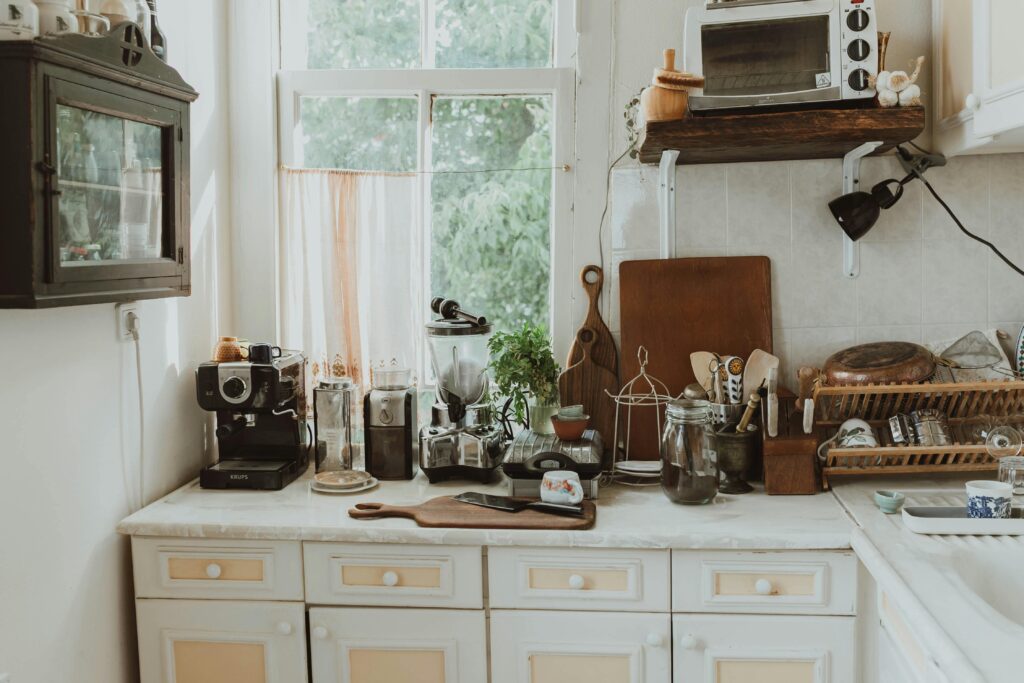Kitchen remodeling can do more than just refresh your home’s appearance, it can transform the way you live. In this article, we’ll explore how a strategic remodeling of your kitchen improves functionality and style, giving you the best of both worlds. Whether you’re struggling with limited counter space, inefficient layout, or outdated design, understanding these key benefits will help you make informed decisions for a renovation that truly fits your lifestyle.
By the end of this read, you’ll learn practical tips on optimizing kitchen layouts, selecting materials that combine durability with aesthetic appeal, and integrating modern appliances that complement your daily cooking routines. So if you’re ready to revamp your kitchen into a more functional and stylish space, keep reading to uncover the transformative power of kitchen remodeling.
Key Takeaways
- Assess Your Current Kitchen: Identify functionality issues like lack of counter space and storage while considering which design elements you want to update.
- Define Clear Remodeling Goals: Whether increasing workspace, upgrading appliances, or enhancing style, set specific objectives to guide your remodel.
- Optimize Layout for Efficiency: Consider the kitchen work triangle and create zones for cooking, cleaning, and storage to improve workflow.
- Choose Durable, Stylish Materials: Select materials like quartz for countertops, solid wood for cabinetry, and moisture-resistant flooring for a functional, lasting space.
- Upgrade Appliances and Fixtures: Opt for energy-efficient appliances and smart fixtures to enhance convenience and reduce energy costs.
- Maximize Storage: Incorporate pull-out shelves, corner drawers, and vertical storage solutions to keep your kitchen organized and clutter-free.
- Incorporate Personal Style: Add finishing touches like decorative hardware and color schemes that align with your unique taste and home’s aesthetic.
Table of Contents
ToggleWhy Kitchen Renovation Is More Important for Enhancing Functionality and Style Than You Think
When it comes to home improvement, few projects deliver the powerful combination of increased functionality and elevated style quite like a kitchen renovation. The keyword here is “kitchen renovation” , a term that encapsulates not just aesthetic enhancements, but crucial upgrades that improve how we live and cook daily. But why is kitchen renovation so important, and what tangible benefits can homeowners expect beyond a fresh look? Let’s dive deeper.
Understanding Kitchen Renovation: More Than Just a Makeover
Kitchen renovation involves revamping the core aspects of this essential home space. It can mean installing modern appliances, optimizing the layout for better workflow, upgrading cabinetry, or introducing stylish design elements that reflect current trends. The ultimate aim? To create a kitchen that isn’t just visually appealing but also seamlessly functional and tailored to the family’s lifestyle.
According to a study by the National Kitchen & Bath Association, 85% of homeowners who invest in a kitchen renovation report a significant improvement in daily usability and satisfaction. This is no coincidence. The kitchen is, after all, often referred to as the “heart of the home,” a place where meals are prepared, stories are shared, and memories are made.
The Practical Benefits: Functionality Meets Efficiency
One of the most compelling reasons to undertake a kitchen renovation is to improve functionality. Many older kitchens suffer from outdated layouts that hinder movement and reduce cooking efficiency. A well-executed kitchen renovation addresses these issues by adopting modern design principles such as the work triangle , a concept that strategically positions the sink, stove, and refrigerator to minimize effort and maximize ease.
Additionally, updated storage solutions like pull-out pantry shelves, soft-close drawers, and custom cabinetry save time and reduce clutter. For families, this means less frustration and more time spent enjoying meals and conversations.

Boosting Style While Adding Value
But a kitchen renovation isn’t just about improved function , it’s also a prized aesthetic update. Styles have evolved rapidly over the years, blending minimalist design with warm, inviting textures like natural wood and stone. Renovations offer the chance to align kitchen appearance with your personal taste, making it a space you feel proud of showing to guests and using every day.
Moreover, real estate experts agree that a stylish, functional kitchen can drastically increase a home\’s market value. The National Association of Realtors reports that kitchen renovations offer an average return on investment (ROI) of about 60-70%. This means that not only do you get to enjoy a better kitchen today, but you also make a smart financial decision for the future.
A Real-Life Success Story
Consider the case of Emily and James, a young couple who transformed their cramped, outdated kitchen into a spacious, modern hub for family life. By investing in a kitchen renovation focused on improving layout efficiency and incorporating timeless design elements, they managed to double their kitchen storage and increase natural light with a skylight installation. The result? Not only did their daily cooking routine become smoother, but their home appraisal skyrocketed, attracting multiple offers above their asking price when they decided to sell.
In sum, kitchen renovation is far more than a cosmetic upgrade, it’s a strategic improvement that enhances your home’s functionality and style, enriches your daily living experience, and increases your property’s overall value. Understanding its importance is the first step to envisioning the kitchen you deserve.
How to Apply Kitchen Remodeling to Improve Functionality and Style Step by Step
Embarking on a kitchen remodeling project can seem overwhelming, but with a clear, step-by-step approach, you can transform your kitchen into a space that perfectly balances functionality and style. Whether your goal is to enhance workflow, add modern aesthetics, or maximize storage, follow this detailed guide to ensure your kitchen remodel delivers impressive results.
1. Assess Your Current Kitchen’s Strengths and Weaknesses
Start by taking a critical look at your existing kitchen. Identify the pain points that affect usability and what you love about the space.
– Functionality Issues: Are you lacking counter space? Is the layout not conducive to cooking efficiently? Note any problems with appliance placement or insufficient storage.
– Stylistic Elements: What design features do you want to keep or update? Consider color schemes, cabinetry style, and overall ambiance.
Writing down your observations will help you clarify priorities for the remodel.
2. Define Your Remodeling Goals Clearly
A well-defined goal aligns the remodeling process with your vision of improved functionality and style.
– Increase workspace by adding an island or extending counters.
– Upgrade to energy-efficient appliances.
– Enhance lighting for both task and ambient needs.
– Adopt a modern style, such as minimalist design or farmhouse chic.
Setting specific goals ensures that each decision you make contributes to your ideal kitchen.
3. Plan the Layout for Maximum Efficiency
One of the most effective ways to improve your kitchen\’s functionality is by optimizing the layout. The classic “kitchen work triangle” , connecting the stove, sink, and refrigerator , remains a gold standard.
– Work Triangle Optimization: Ensure these three workstations are neither too far apart nor too close, improving movement flow.
– Zones Creation: Designate areas for cooking, cleaning, prepping, and storage to streamline your activities.
– Open Floor Designs: Consider open layouts to improve space perception and ease of movement.
Use grid paper or kitchen design software to sketch and visualize your proposed layout changes.
4. Choose Materials and Finishes that Combine Style and Durability
Selecting the right materials directly impacts both the aesthetics and longevity of your remodel.
– Countertops: Quartz and granite offer durability with chic finishes. Butcher block adds warmth while remaining functional.
– Cabinetry: Opt for solid wood or high-quality laminates in styles that reflect your personal taste.
– Backsplash: Tiles or glass designs can serve as a stunning focal point that also protects walls.
– Flooring: Choose moisture-resistant and easy-to-clean materials such as ceramic tiles or engineered hardwood.
Selecting materials with an eye toward coordination ensures your kitchen feels unified and stylish.
5. Upgrade Appliances and Fixtures Strategically
Modern appliances and smart fixtures greatly boost kitchen efficiency.
– Energy-Efficient Appliances: Invest in Energy Star-rated refrigerators, ovens, and dishwashers to save on utility bills.
– Smart Technology: Consider smart fridges or faucets with sensor activation that enhance convenience.
– Lighting: Install layered lighting, including under-cabinet task lights and statement pendant lamps.
Strategically upgrading appliances and fixtures improves both performance and modern appeal.
6. Maximize Storage Solutions for Clutter-Free Space
Clutter disrupts both function and style in any kitchen. Integrated and creative storage options are key.
– Pull-Out Shelves: Improve accessibility to deep cabinets.
– Lazy Susans and Corner Drawers: Make use of awkward spaces.
– Vertical Storage: Add open shelving or ceiling-mounted racks.
– Drawer Dividers: Organize utensils and tools neatly.
By maximizing storage intelligently, your remodeled kitchen will stay organized and inviting.
7. Incorporate Personal Style and Finishing Touches
Finally, add details that make your kitchen uniquely yours while reinforcing the design theme.
– Choose hardware like knobs and pulls that complement your cabinetry style.
– Add decorative elements, such as plants, art, or colorful dishware.
– Use paint and wall treatments that unify the space with your home\’s aesthetic.
These finishing touches bring warmth and character to your newly remodeled kitchen.
Following this step-by-step approach to kitchen remodeling will help you systematically transform your space, enhancing both its functionality and style. The key is to plan carefully, choose quality materials and appliances, and personalize the design to meet your everyday needs. With patience and attention to detail, your kitchen remodel will become a stunning, efficient heart of your home.
Tips for Enhancing Kitchen Remodel to Boost Functionality and Style:
✅ Plan Layout Efficiently: Optimize the kitchen triangle (sink, stove, fridge) for seamless workflow.
✅ Choose Durable Materials: Select countertops and flooring that withstand daily wear and tear while looking stylish.
✅ Maximize Storage Space: Incorporate pull-out shelves, overhead cabinets, and pantry organizers to reduce clutter.
✅ Invest in Quality Lighting: Combine ambient, task, and accent lighting to create a bright and inviting atmosphere.
✅ Select Modern Appliances: Upgrade to energy-efficient, smart appliances that complement your design.
✅ Use Cohesive Color Schemes: Harmonize cabinets, walls, and backsplashes with colors that reflect your taste yet remain timeless.
✅ Add Functional Islands or Breakfast Bars: Enhance prep space and create areas for casual dining or socializing.
✅ Incorporate Stylish Fixtures and Hardware: Update handles, faucets, and sinks to unify the kitchen’s aesthetic and improve usability.
💡 Extra tip: Don’t forget ventilation! A good range hood improves air quality and protects your kitchen’s look.
Key Concepts
When diving into the realm of kitchen remodeling, two primary pillars often surface: functionality and style. Understanding these concepts not only enriches the conversation but also illuminates why this topic captivates homeowners, designers, and enthusiasts alike.
Functionality: The Heartbeat of a Kitchen
At its core, functionality in kitchen remodeling reflects how well the space serves its purpose. Imagine a well-choreographed dance, where every step and movement flows seamlessly, this is the essence of a functional kitchen. It’s not just about where the appliances are placed; it’s about creating an environment that anticipates the cook’s needs before they arise.
Consider the classic “kitchen work triangle,” a concept developed mid-20th century that revolves around the sink, refrigerator, and stove. This triangle exists to minimize wasted movement, much like a well-planned route in a bustling city. The smoother the flow between these points, the more efficient the kitchen becomes, cutting down time spent fetching ingredients or cleaning up.
Functional remodeling often involves rethinking storage solutions. Imagine the kitchen as a vibrant library, where every utensil, tool, and ingredient has its perfect shelf or drawer. Pull-out pantry racks, deep drawers for pots, and vertical dividers for baking sheets transform chaotic clutter into visual peace and operational ease. The goal is to eliminate “kitchen chaos,” replacing it with intuitive organization.
Furthermore, functionality is intimately tied to ergonomics, the study of designing spaces around human comfort and efficiency. A countertop at the wrong height can feel like a stumbling block, much like an ill-fitting shoe. Therefore, adjusting counter heights, stove placements, and even lighting can enhance how a kitchen serves its users.
Style: Breathing Life into the Space
While functionality ensures the kitchen works smoothly, style breathes personality and emotion into the room. It’s where the art of design meets the science of architecture, transforming a purely utilitarian space into the heart of the home with visual allure.
Style in kitchen remodeling can be thought of as storytelling through materials, colors, and forms. For example, choosing warm wooden cabinetry might evoke a rustic countryside tale, inviting feelings of comfort and tradition. Conversely, sleek stainless steel finishes and minimalist lines can narrate a modern, efficient saga of technological sophistication.
The relationship between style and kitchen remodeling is akin to a painter selecting a palette. Each shade and surface texture tells part of the story, weaving together a narrative that resonates with the homeowner’s taste and lifestyle. This is why the same kitchen layout can feel dramatically different simply by changing countertops from granite to quartz or swapping traditional fixtures for contemporary ones.
Moreover, style extends beyond visual elements to influence mood and ambiance. Soft, ambient lighting can create a cozy, intimate atmosphere perfect for family gatherings, while bright, cool lighting sharpens focus, a boon for serious culinary experimentation.
The Symbiosis of Functionality and Style
The magic of kitchen remodeling lies in marrying functionality with style, crafting a space that doesn’t just work perfectly but also feels like home. Imagine two dancers performing in harmony, one representing utility, the other creativity. When their movements sync, the result is a kitchen that supports everyday life while reflecting the spirit of those who inhabit it.
This fusion often surfaces in choices that optimize both realms. For instance, an island with integrated storage and seating not only serves practical purposes but also invites social interaction, embodying style that embraces community. Similarly, selecting durable yet aesthetically pleasing materials ensures the kitchen withstands time physically and visually.
Through remodeling, the kitchen transforms from a static area to a living storybook, where every cabinet, countertop, and lighting fixture writes a chapter that balances pragmatism and beauty.
Beyond the Surface: Emotional and Social Dimensions
Lastly, the kitchen transcends functional and stylistic concerns to anchor emotional and social dimensions of a home. Here, memories simmer alongside meals, children learning to bake, friends sharing conversations, and quiet moments of solitude with a morning coffee.
Thus, remodeling is not merely a technical upgrade but a deeply human endeavor to craft spaces that nurture relationships and personal well-being. This emotional undercurrent imbues the kitchen with meaning far richer than tile and paint can capture.
In conclusion, exploring the key concepts of remodeling kitchens to improve functionality and style reveals a multidimensional dialogue between utility, aesthetics, and human experience. It’s a complex dance where every element plays a role in transforming a simple room into a vibrant, cherished heart of the home.
Frequently Asked Questions
❓ What are the main benefits of kitchen remodeling for functionality and style?
Kitchen remodeling significantly improves the flow, usability, and storage capacity, making cooking and meal prep more efficient. At the same time, it updates the aesthetic appeal, adding a modern or personalized style that increases the overall value of your home.
❓ How long does a typical kitchen remodel take?
A standard kitchen remodel usually takes between 4 to 8 weeks, depending on the complexity of the project. Enhancements aimed at both functionality and style may require additional time for custom cabinetry or specialized design elements.
❓ Do I need to hire a professional to improve my kitchen’s functionality and style?
While minor updates can be DIY, professional remodeling ensures optimal design, better use of space, and higher quality finishes. Experts can blend functionality and style seamlessly based on your lifestyle needs.
❓ What are key design elements to improve kitchen functionality?
Important elements include better lighting, ergonomic layout, smart storage solutions, and high-quality appliances. These features make the kitchen easier to use and maintain while complementing the style.
❓ How can I make a small kitchen look stylish but functional?
Focus on space-saving solutions like vertical storage and multipurpose islands. Light colors, reflective surfaces, and open shelving enhance both style and the perception of space, making your kitchen feel larger and more inviting.


